How Do I Get My Pothos to Flower? Things to Consider
Pothos are one of the easiest, most forgiving indoor houseplants. They’re great for beginners, there’s several dozen different kinds to choose from, and they produce leaves in a variety of colors—all sorts of green and yellow hues plus many variegated kinds as well.
But with all that beautiful foliage, you might be wondering if your pothos plant will ever produce blooms. Can you do something to get it to flower?
Pothos plants can technically develop white or cream-colored conical flowers. However, such flowers are extremely rare since pothos require very specific growing conditions to produce any flowers at all, such as tropical climates, large outdoor spaces, and decades of growth.
Unless you live in a tropical region of the world–or work in a huge indoor botanical garden–there’s likely nothing you can do to coax your pothos to flower. Thankfully, pothos are gorgeous non-flowering plants that’ll make a beautiful addition to your home regardless of whether they flower or not.
If you’d like to learn more about why your pothos won’t produce flowers–and what you can do to encourage flowering if you happen to live in more tropical parts of the world–read on to find out exactly why pothos won’t bloom and what conditions you’d need to have to encourage a pothos plant to produce flowers.

Do Pothos Plants Ever Bloom or Flower?
To understand why getting a pothos to flower is so difficult, we must first understand a bit about their biology.
Pothos (Epipremnum aureum) are evergreen plants native to the tropical regions of French Polynesia. In their natural habitat, pothos leaves can grow up to 30 inches wide (76 cm), and their vines can stretch up to 60 feet long (18 m).
Pothos have two growing phases: the juvenile vegetative phase (where they focus on growing leaves, stems, and roots) and the mature reproductive phase (where they begin flowering and producing seeds).

Pothos flowers are large, much like that of a monstera plant, and they’re also quite rare since most pothos don’t ever reach the reproductive phase. The flower forms in a spathe, which looks like one large petal, and out of the center grows a spadix, a cone-shaped flower that looks a little like corn.

In the wild, pothos can remain in their juvenile vegetative phase for 10 or even 20 years before entering their reproductive phase. Even when fully mature, they’re still considered a “shy flowering” plant.
What this means is that pothos don’t flower very often, even in an ideal growing environment. Scientifically speaking, they produce very low levels of the reproductive hormone needed to produce flowers. This means that even though they technically can produce flowers throughout their mature reproductive phase, they rarely develop blooms, even when the conditions are perfect for them.
Why Is My Pothos Plant Not Flowering?
Outside of tropical regions–or massive indoor botanical gardens–it’s almost impossible to create the appropriate conditions for a pothos plant to produce flowers. They need lots of ground space, warm temperatures, high humidity, and large adjacent structures for their vines to climb.
When a pothos plant lives in a container, it’ll stay in its juvenile growth stage indefinitely because containers, even the very largest ones, don’t provide enough space for the natural root growth that’s required to allow pothos to develop into large, sprawling plants that are capable of transitioning into their reproductive phase and flowering.
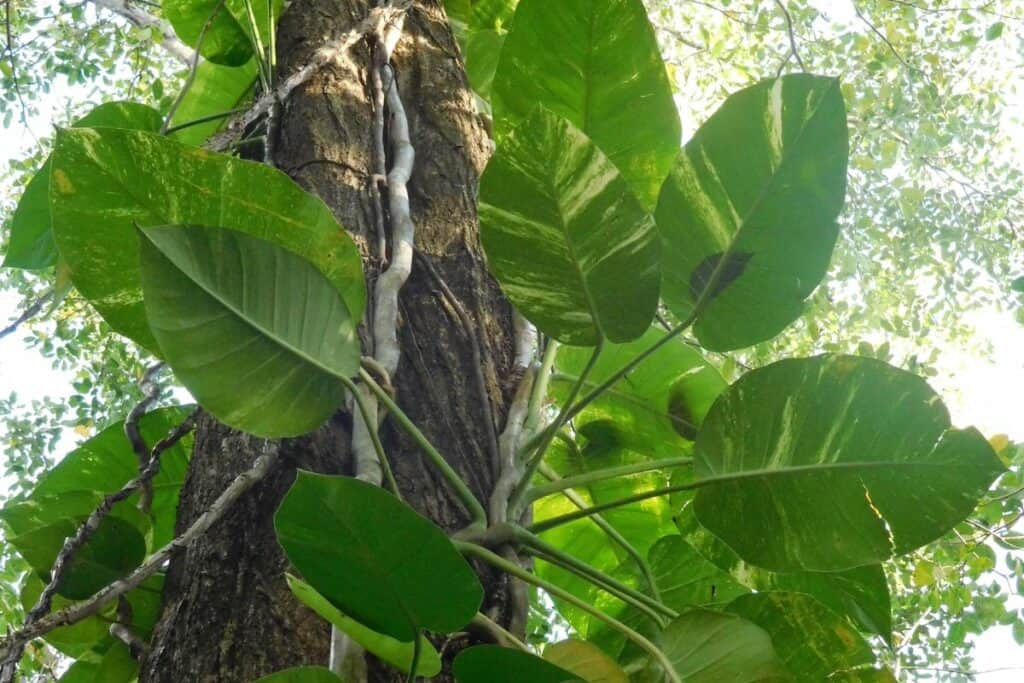
Another reason that pothos houseplants won’t flower has to do with plant age. Generally speaking, pothos that are growing in their natural environment will remain in their juvenile stage for at least 10 years before it’s even possible for them to produce blooms.
Beyond the root restrictions that keep pothos houseplants from flowering, indoor pothos plants usually live for around 10 years total, but that’s simply not enough time for the plant to mature and enter into its flower-producing phase of life.
Finally, pothos plants also rarely flower since they’re usually deficient in the growth hormone gibberellin, which scientists believe is the main reason for their “shy flowering” nature.
And on top of that, when pothos plants do manage to produce blooms, their flowers only last a few days before the plant returns to its flowerless state.
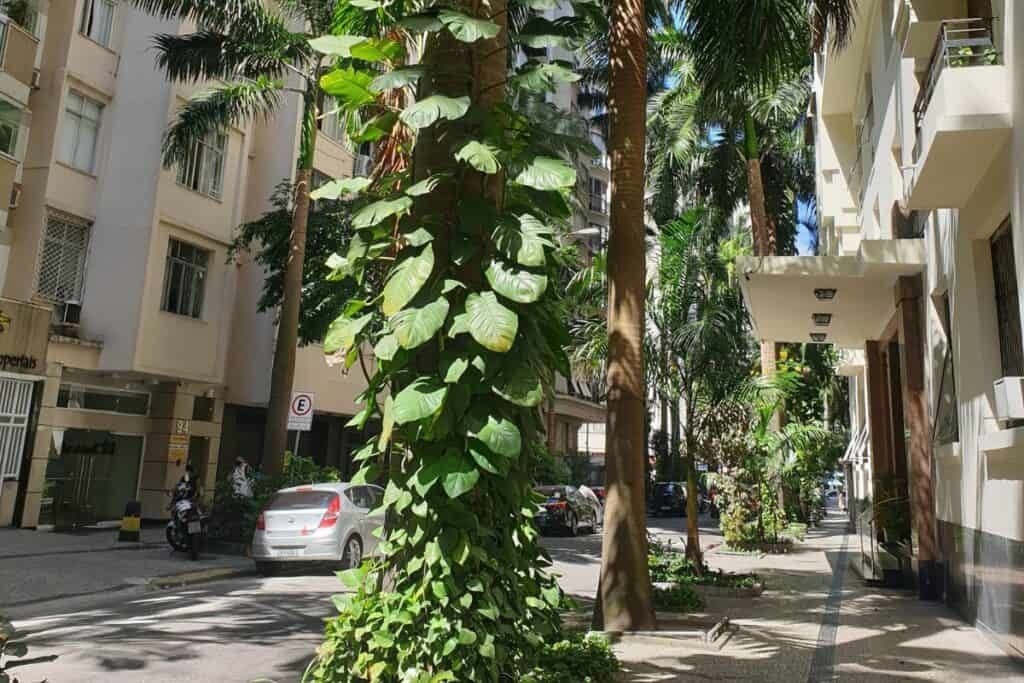
To put this in perspective, one of the last known flowerings of a cultivated pothos plant occurred in the 1960s. Other pothos plants have flowered since that time, but when cultivated outside their natural environment, these plants require hormonal supplements in order to produce blooms.
How to Get a Pothos to Flower: 4 Practically Impossible Steps
Although it’s highly unlikely, it’s theoretically possible to produce flowering pothos given the right environmental conditions.
If you live in an area with a tropical climate, your best chances of seeing a pothos flower are by providing the proper outdoor habitat for your plant.
Here’s what you’ll need:
Space
Generally speaking, pothos plants need to grow at least 35-40 feet tall (10-12 m) before they’ll develop the maturity and root systems they need to produce blooms.

You’ll need your pothos to grow near a tall tree or a large structure of some kind. As it grows, it’ll latch on to tree bark, trellises, or other material and climb upward, growing larger leaves as it develops a deeper, more mature root system.
Soil and Shade
For pothos plants to thrive, they need nutrient rich, well-draining soil.
If you live in a tropical area and want to make a long-term investment in an outdoor pothos plant, consider mixing peat moss or vermiculite into your soil to create optimal growing conditions.
Heat and Humidity
Pothos are unlikely to survive temperatures under 60°F (15°C) and certainly won’t flower in colder climates.
They prefer outdoor temperatures between 70-90°F (21-32° C), and they do best in areas that maintain around 60% humidity on a fairly regular basis.
Time
Pothos needs many years to develop into fully mature plants that are capable of producing blooms and beautiful flowers.
If you’ve got an outdoor pothos, you’ll need to nurture it for at least 10 years before you can expect it to produce any kind of flower.
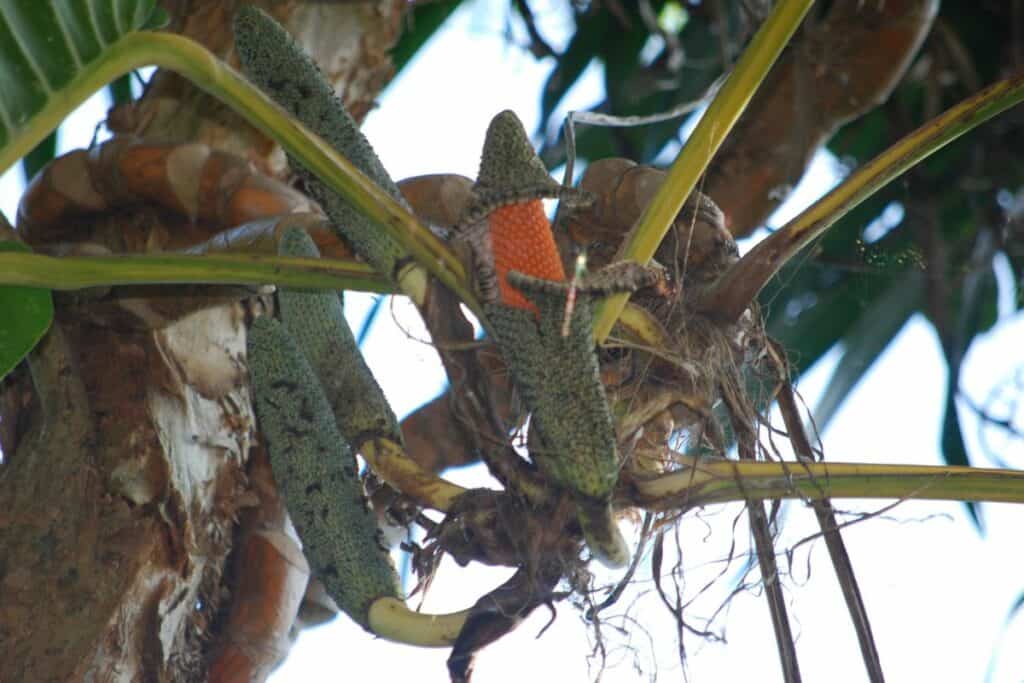
But what about people who don’t live in tropical areas? Can they grow flower-producing pothos plants?
As a general rule, pothos plants will only grow as large as their container because their root systems need room to expand and flourish. So if you’re wanting to grow massive, mature pothos plants, you’re going to need a greenhouse or terrarium of some kind.
But I’m not talking your everyday greenhouse or terrarium. You’re instead going to need something massive, like those 2-story botanical gardens that you can find in most big cities.
If you’ve got 30+ feet of enclosed vertical growing space, you can amend the native soil within that space and plant pothos plants near large trees or trellises.
Of course, you’ll need to maintain rainforest conditions (around 60% humidity), and you’ll need to ensure that the plant gets regular deep waterings. Just be sure to allow the top 2-6 inches of soil to dry out a bit between the thorough waterings so as to encourage deeper root growth.
Long story short, pothos plants produce beautiful leaves, and they’re incredibly easy to care for. But unless you live in a tropical region surrounded by rainforest-like conditions, you shouldn’t expect your pothos to flower.
The good news is that juvenile pothos plants will look great in your home even if they’re never going to bloom. And if you’re looking for color, just situate your pothos among other more colorful houseplants, and you’ll have lots of colors to showcase!
Additional Information
If you’d like to read more about growing and nurturing pothos plants, take a look at these related articles:

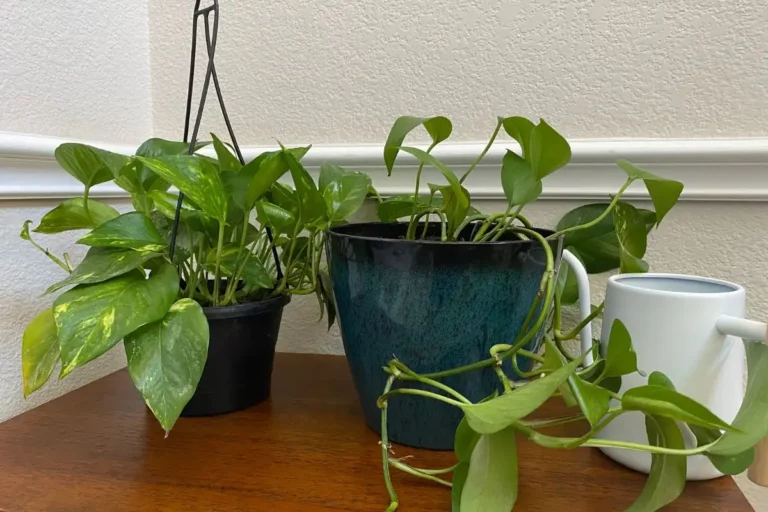
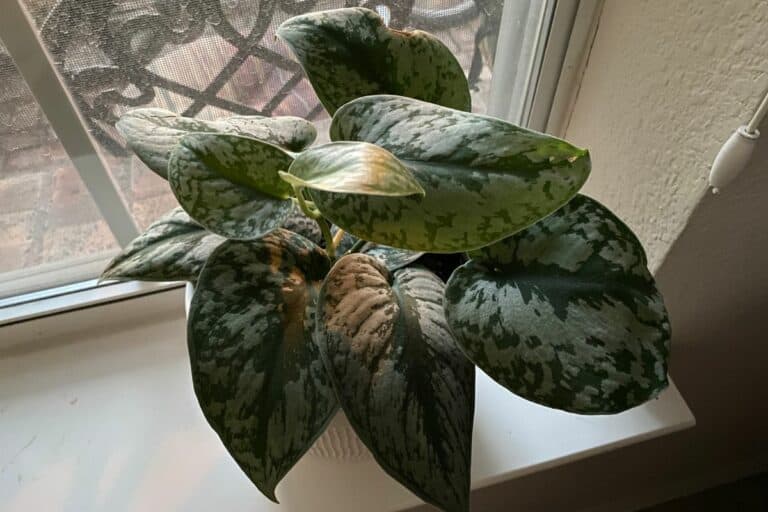
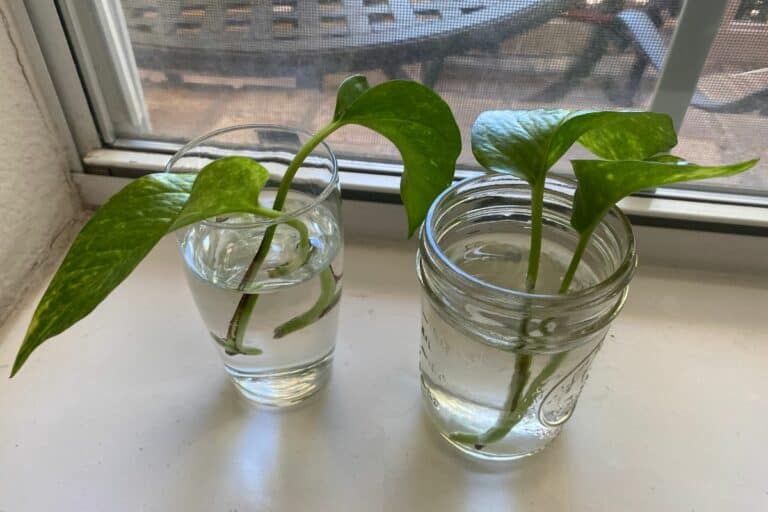


It’s strange reading that these plants never seem to flower as last recorded since the 1960s. I have mine growing all over my backyard under shade of a tree in the corner from a discarded as a houseplant from over a decade ago. I left it to grow wild because it was pretty nice ground cover and it blooms every now and again with small white creamy flowers when it’s warm and humid.
Hi John, wow, your plant blooms every so often? That’s pretty incredible. I’d love to know more (like where you live and what your climate zone is) since these plants can’t live outside here in North Texas. I’ve got quite a few of them inside the house, but sadly, I’ll never see them go wild. I bet that’s beautiful! If you want to reach out, you can find my email by clicking on the “Contact” button on the bottom of my website. Thanks for sharing!